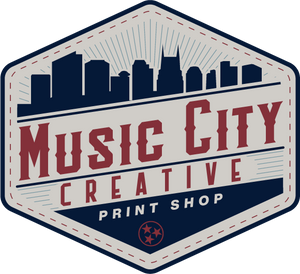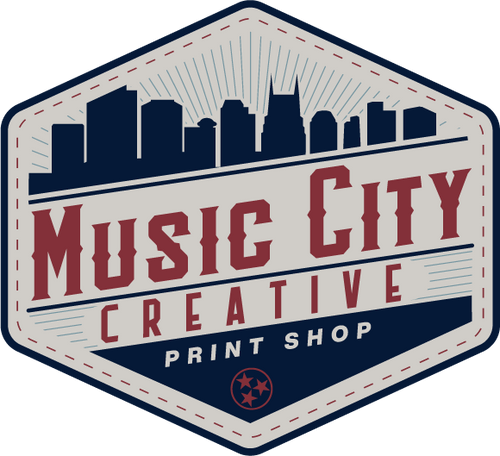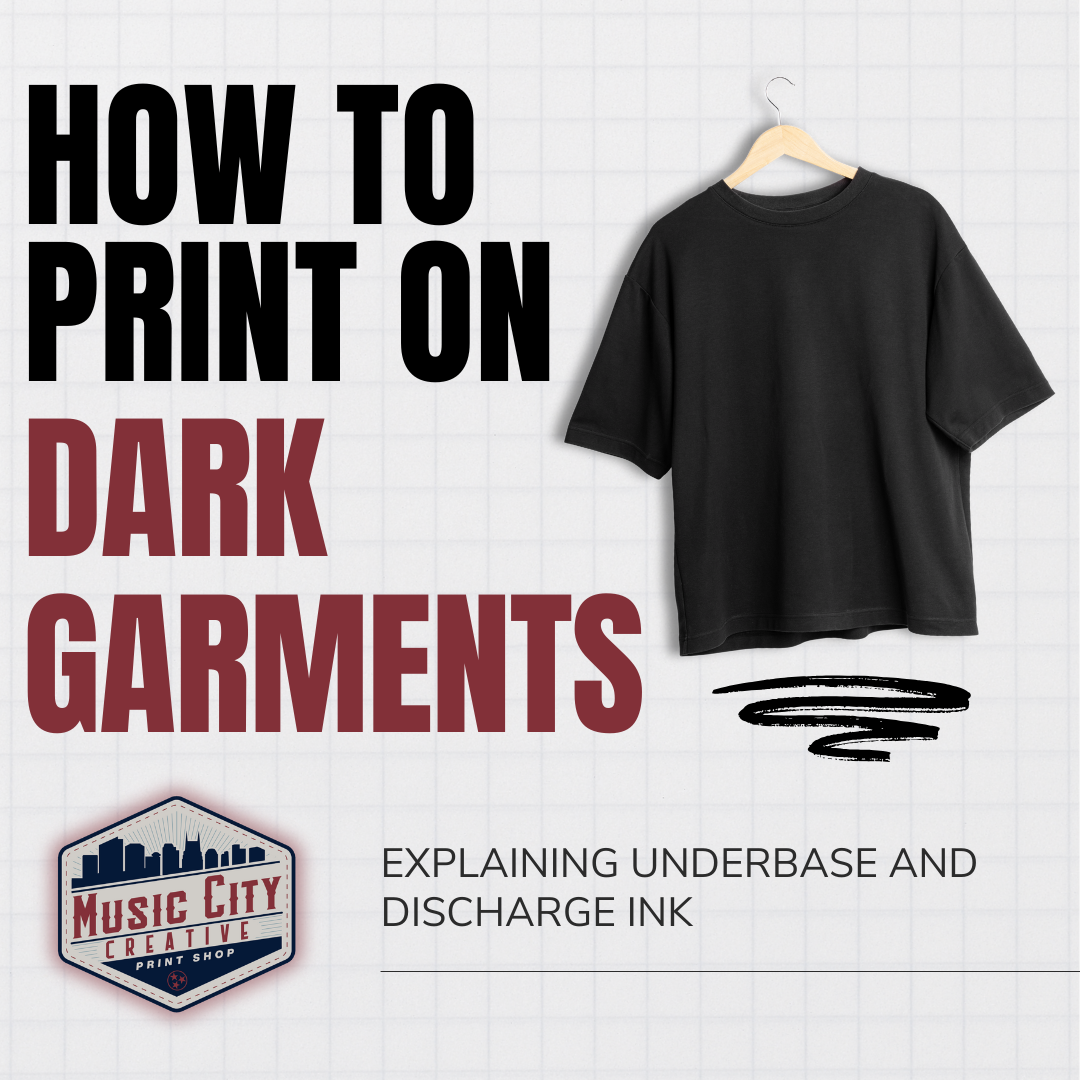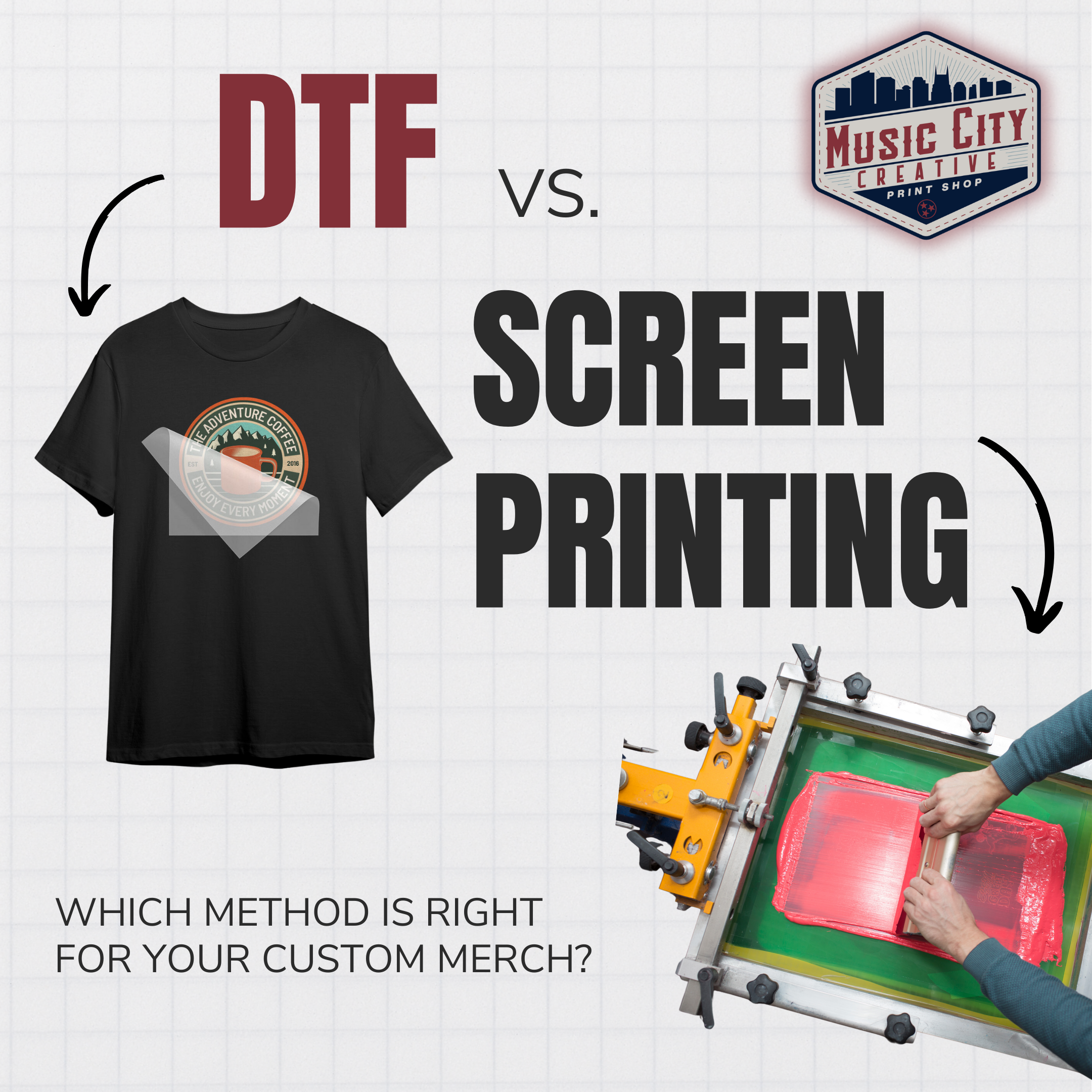Printing vibrant, detailed designs on dark-colored shirts takes more than just great artwork… It requires the right techniques and know-how! We specialize in printing on black, navy, maroon, and other deep hues using two expert methods: underbase and discharge printing.
In this guide, we’ll break down what each technique is, how it works, and when to use them.
Why Printing on Dark Garments is Difficult
When you print directly onto light garments, the ink sits cleanly on the fabric, maintaining full brightness and clarity. On dark garments, however, inks can get "swallowed" by the dark background, since dark fabrics absorb ink. Without the right base, your design might look dull, muted, or completely disappear.
That’s where specialized techniques like underbase and discharge printing come in.
Technique #1: Using an Underbase
What is an Underbase?
Underbase is the process of printing a thin layer of white ink underneath your entire design (or selected parts of it). Think of it as priming a wall with a light color before applying bright colors! It gives inks a bright, neutral surface to sit on.
How it Works:
- A white underbase is printed in the shape of your design.
- The underbase is flash-cured (briefly heated to set it without fully drying).
- Your chosen ink colors are printed on top of the cured underbase.
Benefits of Using Underbase:
- Makes bright or pastel inks pop on dark garments
- Keeps details crisp and colors consistent
- Ideal for full-color designs or detailed graphics on a dark garment.
Disadvantages of Using Underbase:
- Can create a heavier or stiffer print feel, especially with thick ink layers
- If top colors don’t fully cover the underbase, it can result in grainy or uneven areas—especially with halftone artwork
- Requires extra setup time, ink, and curing steps, which can increase cost
- May complicate precise color matching, since inks are layered
Technique #2: Discharge Printing
What is Discharge Printing?
Discharge printing uses a special ink that removes the dye from the fabric in the areas it’s printed—essentially bleaching the shirt's original color—and replaces it with your chosen ink color. This technique works best on 100% cotton garments dyed with reactive dyes (most commonly found in darker shirts like black or navy).
How it Works:
- Discharge ink is printed directly onto the shirt.
- The garment is cured at a high temperature, activating the discharge agent.
- The dye in the shirt is chemically removed, leaving behind your ink in its place.

Benefits of Discharge Printing:
- Ultra-soft, no-feel prints—great for fashion-forward or vintage-style designs
- Vibrant colors without a thick ink layer
- Long-lasting prints that age well with the garment
Disadvantages of Discharge Printing:
- Only works well on natural fibers (primarily 100% cotton)**
- Results vary, so even two shirts from the same manufacturer can discharge slightly differently depending on the dye batch
- Some shirt colors simply don’t discharge
- Producing accurate color matches can be challenging
**Note: You can discharge print on blended fabrics (like 50/50 or triblends), but the synthetic fibers won't react to discharge. This can create cool, heathered effects, but the outcome is less predictable.
Bring Your Design to Life—No Matter the Shirt Color
Dark garments don’t have to mean dull results. Any time you’re printing a light or vibrant design on a dark-colored shirt, you’ll need one of these techniques to make your artwork stand out. With the right technique, your artwork can shine just as brightly on black tees as it does on white ones!
Whether you’re going for bold, high-impact prints or a soft, vintage feel, Music City Creative can help you choose the best method for your design and garment. Our team knows the ins and outs of fabric types, ink behavior, and specialty printing techniques, so you don’t have to!
📩 Not sure which approach is right for your project? Contact us and we'll walk you through it!





